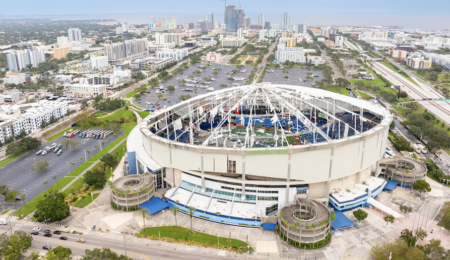As preparations ramp up for the 2026 FIFA World Cup in the United States, player safety has emerged as a pressing concern, with a new study highlighting the potential dangers posed by extreme heat during the tournament, which will take place in the peak of the American summer.
Research led by Queen’s University Belfast reveals that temperatures at 14 of the 16 host stadiums could exceed dangerous thresholds during the event. The findings are based on two decades of meteorological data and utilize the Wet Bulb Globe Temperature (WBGT) index, a key measure of heat stress. Only Mexico City and Vancouver were identified as locations where temperatures have historically remained below the WBGT danger threshold of 28°C.
Dr. Donal Mullan, the climate scientist heading the study, advised caution when scheduling matches. “Early morning or late evening kick-offs would be safest at most venues,” Dr. Mullan told BBC Sport. “If I could send one message to FIFA, it would be to avoid afternoon matches, particularly between midday and 6 p.m., to significantly reduce the risk of heat-related issues.”
FIFA has not yet announced official kick-off times for the tournament. However, with key European and Asian markets in less favorable time zones for traditional viewing hours, there is concern that commercial pressures could outweigh player safety considerations. Historically, scheduling has prioritized television audiences, as seen during the last U.S.-hosted World Cup final in 1994, where a 12:30 p.m. local start in Los Angeles exposed players to temperatures soaring up to 100°F (38°C).
The report highlights Miami and Monterrey as cities with the highest potential risk, particularly because their stadiums lack air conditioning. Additional cities flagged for potential afternoon heat hazards include Kansas City, Boston, New York, and Philadelphia. While Dallas and Houston—the hottest of the host cities—are equipped with air-conditioned venues, Dr. Mullan warns that spectators and officials may still face health risks when exposed to outdoor conditions before and after matches.
The last World Cup in Qatar was shifted to the winter months to mitigate similar concerns over extreme heat, marking a historic departure from the traditional tournament schedule. The report warns that if FIFA fails to heed these new warnings, the 2026 World Cup could see matches played under conditions that surpass heat thresholds recommended for postponement by some football governing bodies.
The response from FIFA remains to be seen and may ultimately hinge on how players cope with heat during the upcoming FIFA Club World Cup this summer.





